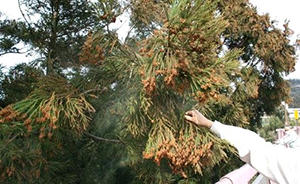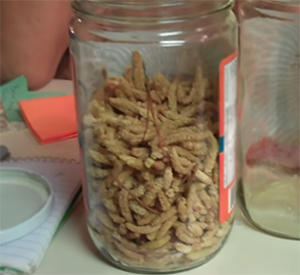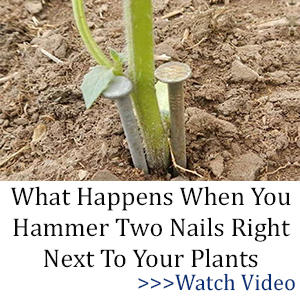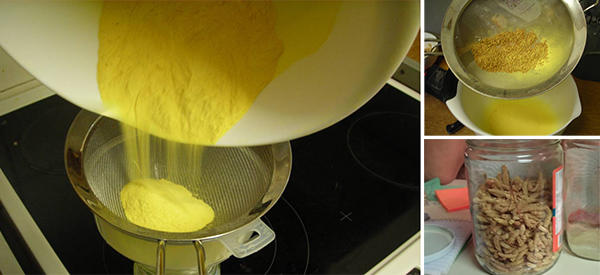There are a number of things that could be considered “holy grails” within modern medicine. These are things that seem to defy the best efforts of medical science, no matter how much effort is put into them. Cancer is one such thing, with billions spent annually to try and overcome this horrendous disease. But cancer isn’t the only thing. Simpler ailments, like arthritis and the common cold seem to defy our best researchers as well.
Yet there may be a cure to arthritis, which has been sitting right under our noses all this time. As crazy as that might sound, it’s really not all that surprising. Modern medical science depends greatly upon the pharmaceutical industry, whose roots are in herbal medicine. Yet the pharmaceutical industry regularly rejects herbal medicine, while at the same time seeking new compounds in nature which can be synthesized to produce cures for countless diseases.
This dichotomy comes from the fact that you can’t patent something that exists in nature; yet all cures ultimately come from nature. So what the pharmaceutical industry does is search for these cures in nature, then tries to create something artificial, which is close enough to the natural occurring chemical to do the same job, but not the same, so that they can patent it.
Patenting a medicine is essential to the pharmaceutical industry’s success, because they can’t make any money, unless they can charge for their medicines. Worse, from their point of view, is that others can make their medicines, without paying them royalties; so, they have to patent them, so they can recoup their research costs and make money. Sadly, it’s really not about helping people.
Yet Mother Nature or perhaps God Himself really don’t care about making a profit. So, if we can ignore the pharmaceutical industry and go directly to nature, we can find those cures. That’s what was done for thousands of years, before the pharmaceutical industry existed, and it still works today.
Such is the case with this ancient, yet modern cure for arthritis. Apparently the Chinese have used this naturally occurring substance for centuries, yet we are just finding out about it now. Time for us to catch up, I guess.
What the Studies Show
Unlike many herbal cures, this one has actually been studied by someone other than the companies trying to sell the herbal supplements. Kyung Hee University, in Seoul, Republic of Korea (that’s South Korea) has released findings that show that pine pollen is a potential antioxidant and beneficial for inflammatory conditions. It works through down-regulation of JNK and MMPs, making it beneficial for the treatment of chronic inflammatory disorders.
To put that in simple terms, the chronic inflammatory disorders we’re referring to here are arthritis; both rheumatoid arthritis and the more common osteoarthritis, which comes from the degeneration of joint cartilage and the underlying bone in people from middle age onwards.
These aren’t the only thing that pine pollen is useful in curing. Pine pollen is so rich in phyto-nutrients and other beneficial nutrients that it is being referred to as a super-food in some circles. The full list of conditions which pine pollen can help with is still to be determined.
However, pine pollen is one of the few natural substances which has been shown to increase testosterone levels in men suffering from low testosterone, when taken in a tincture. Once again, this claim is backed up by research, specifically checking the testosterone level in the test subjects blood, both before and after taking pine pollen.
As with other natural cures, pine pollen focuses on treating the root cause of the illness, rather than merely treating the symptoms. This allows the body to cure itself, resulting in long-term benefits, even after the treatment is completed.
Using Pine Pollen
Pine pollen is regularly available through a number of different natural medicine companies. They sell it in powder form, as well as in tincture, tablets, capsules and as a powdered extract. A dosage of between 100 mg to 200 mg per day was used in the studies mentioned above. Test subjects took the pine pollen from 21 to 49 days.
Related: How to Make Pine Syrup at Home (Step by Step Guide With Pictures)
Where Pine Pollen Comes From
 Pine pollen is a naturally produced substance from male pine cones growing on pine trees. In general, pollen is the male part of fertilization in plants, containing the male gamete and able to fertilize the female ovule. The pollen is transferred to the ovule by wind, insects or other animals.
Pine pollen is a naturally produced substance from male pine cones growing on pine trees. In general, pollen is the male part of fertilization in plants, containing the male gamete and able to fertilize the female ovule. The pollen is transferred to the ovule by wind, insects or other animals.
True pine trees have both male and female pine cones. The ones we are accustomed to identifying as pine cones are the female pine cones, where the pine seeds grow. Male pine cones are much smaller and grow in clusters. Rather than the “woody” texture of the female pine cones, these are delicate, with the “leaves” being thinner than fingernails.
Not all trees that grow needles are actually pine trees, but only those whose technical names start with “pinus.” For our purposes, the trees we are interested in have a sheathe around the base of the needles and the needles grow in clusters of two to seven needles in a sheathe, depending on the specific species of pine tree.
It is easy to tell when the male pine cones are ready to harvest pollen from by flicking the pine cone with the tip of a finger. If the pine cone releases a puff of yellow pollen, it is ready. The cones can then be harvested by twisting them at the base, breaking them off the tree. Pine trees will normally have a lot of extra male pine cones, so we can harvest quite a bit, without significantly reducing the tree’s ability to reproduce.

To remove the pollen from the male pine cones, put the cones in a large glass jar with a lid. Simply shaking the jar will cause the pine cones to break up, releasing the pollen. The bits of broken pine cone can be filtered out by passing the mixture through a strainer or sieve.
If some of the pine cones are not mature yet and don’t break up, don’t throw them away. Rather, set them out in the sun for a few days, allowing them to finish maturing. Once they do, you will be able to extract the pollen.
Pine pollen can get bitter and rancid over time. The easiest way to keep it for a prolonged period of time is to put it in a glass or plastic container and freeze it. In addition to taking it directly as a dietary supplement, it can be added to baked goods, much like wheat germ.
You may also like:
 The Black Walnut Hull Remedy That Cleans Your Intestines Of Parasites
The Black Walnut Hull Remedy That Cleans Your Intestines Of Parasites
How to Build a 44-Day Stockpile for Only $2.40 a Day (Video)
How to Treat Allergies Naturally This Spring
Black Seed – The Remedy For Everything But Death
Outrageous, But Effective, Medicines People Used In The Past















Where can I buy the pine pollen and know I’m getting the REAL stuff ?
When our pines are pollinating we are sneezing. There are multitudes of people with allergies to pine. The yellow-green pollen gets all over our houses, decks and cars. It’s a very messy reproduction act. I’d never considered using it for any purpose. The bark dust is supposed to be good for worming goats. They love eating pine needles and pulling at the bark. This is an interesting article. I’ll keep it around till next March when we are inundated, again, with all that pollen.
I wasted a little time looking for studies on Pine Pollen, there are very few studies done on natural products. It may well help some people with arthritis, 100% wild caught salmon oil in my experience helps different people with arthritis, as does turmeric (especially its extract curcumin). But everything I could find about Pine Pollen was produced by people who were trying to sell it at a very high price. It may well be worth a trial, but it is always well to remember that almost nothing you read is true. My Dad taught me that, he said, speaking from experience, politicians will lie to you, the army will lie to you, the press will lie to you, and all salesmen all the time everyday are definitely lying to you.
The majority of plants contain a form of testosterone and various testosterone precursors, but actual valid scientific studies show these substances have no influence on human testosterone levels.
I see the Piping Rock pine pollen Chuckster links to is reasonably priced. I’m always skeptical, always ready to try anything, though, so I’ll probably give it a shot for joint pain. Not for testosterone, though, I am a remarkably healthy senior citizen and also very happy my T levels have dropped. Who needs the aggravation?
I just passed 68 and have no arthritis, so far; but, I do find this to be an interesting article. When we bought this place 35 years ago I planted trees, lots of trees, that included sugar maple, blue spruce, Douglas fir, and lots of white pine.
The maple were for tapping and the evergreens for windbreaks; but, I hadn’t looked further into it other than knowing that pine needled tea contains vitamin C. Based on your description I have seen both the male and female cones over the years; but, never gave it much thought. That will be changing.
I do however think you are a bit harsh on the pharma companies.
Yes. They have to develop the products, thoroughly test it, run human trials, and then get FDA approval.
Before they can produce the first bottle for sale, they have spent millions that need to be recouped. If you would like to help, you could get your PhD in biochemistry and ”volunteer” to work for no pay for a few years.
Actually it is; but, not unlike other industries, it requires a profit motive to make it work. I don’t see Ford, GM, or other companies handing out vehicles to everyone at no cost.
Additionally, collecting enough natural substances like pine pollen, packaging it, providing quality control, and distributing it to the estimated 40,000,000 people in the US with the malady, is simply an impossible feat, without some profit motive and paying a lot of people to help.
You are correct; but, in those thousands of years the population has soared and the age where people start seeing maladies has increased. Just 200 years ago there were only 9,000,000 people in the whole country and herbal medicine just does not scale well, especially with the majority living in cities, where the plants with those medications could be miles away.
Can you show me your plan to harvest the pollen and distribute it to 40 million people in 50 states? I would really be interested in the logistics and how you would pay for it.
This BTW doesn’t mean we should not all try this when possible as I plan to do.
Extremely anxious to receive this information. Many family members, as well as friends, are suffering from various conditions.
Don’t know where you live but poke salet (pokeweed) grows over a large part of the continental USAj now blooming in mid south and the berries a lot of people (including me) were raised to think they are poison but I have been taking the berries the birds love to eat & then cover our cars with purple poop in the fall. for forty+ years with no problem.. Can vouch for it stopping pain of gout, arthritis & bursitis.
Found my brother hobbling with a walker & asked why,. After many trips to doctor & gettihg diagnosed with gout that got worse with medical protocol; His doctor had told him he had nothing else to try, he’d have to live with it,. Carried him a bag of my ripe pokeberries with instructions to take 15 to 25 berries 4 times per day. Also told him to eat lots of asparagus.
Three days later he was walking without walker and without pain. /think most people will find the pokeberries easier to harvest. If you have an abundant crop, you can just dehydrate the excess for later.
Also attended physiology lecture where instructor shared pearl of wisdom with us that pokeberries boost the immune system from a little research project they had going at the time (1977-8) but didh’t know how, Suspect it was a number of nutrients/chemicals in them, especially the vitamin C.
Wondering Woman,
I only have Gout and none of the others; but, that’s good information.
That’s crazy. I was placed on a week of Colchicine and now take a daily dose of Allopurinol. That was in 2012 and I’ve had no gout episodes since, even though I don’t avoid those “rich” foods that can cause it.
Wondering Woman,
That’s unfortunate and I wonder what his doctor tried on him.
I used to have major gout flares until a friend and E.R. doc had me tested for Uric acid, the proximal cause of gout. She put me on several days of Colchicine @ 0.6 mg 3 times per day, and after what she warned was the worst diarrhea I’ve ever had, I was cleared out and pain free. That was in 2012 and taking a daily 100 mg dose of Allopurinol since then, I have been gout free and have no diet restrictions, so perhaps you brother’s doc gave up on him too soon.
Like using grid power and other utilities like telephones, the Allopurinol is a modern technology I will continue to use; however, in the event of losing any of these modern things, a backup plan is essential to continuing life.
Black cherries, cherry juice or capsules can also help to alleviate gout.
While the Asparagus will not cure gout, studies have shown that vegetables high in purines, such as asparagus and spinach, don’t increase the risk of gout or recurring gout attacks like other purine rich foods such as meats like veal, venison, and duck, along with most red meats, much seafood, including tuna, sardines, anchovies, herring, scallops, trout, and haddock, as well as sweetbreads, like liver, kidneys, heart and tongue
I love my sweetbreads like liver & onions and with the daily Allopurinol I can eat them all.
I know something that actually works as well. I’ve seen it with my own eyes with my husband. He got RA after contracting Scarlet Fever in his mid 50’s. His sedintation numbers were off the charts and he was having to use crutches to move around. Doc said he would NEVER get better and his next step was a wheelchair. Three SS docs also reported to the government that he was ‘eat up with it.’ They wouldn’t give him disability though because he could ‘sit and answer a phone.’ So, being the herbalist I am, I started him on Poke berries. Found his individual dose (everyone is different) and with a few months time, he was back to working construction. The doctor that initially diagnosed him through blood work said ‘you never had it then’ but we told him to ‘look at the chart doc. YOU did the testing yourself!” *important* the SEED of the berry is poisonous but cannot be digested, so one must never CHEW the berries. Also, to find individual dosing, a person must start with one then add one per day until you begin to feel ‘off’ ‘disconnected’ then back up to the day before’s. That is the dosage for that person. Tincture is the same way.
Is the polen from any kind of pine or from a certain kind? I have Blue Spruce on my backyard, can I get it from them?
What
In what season can I get the polen from pines?